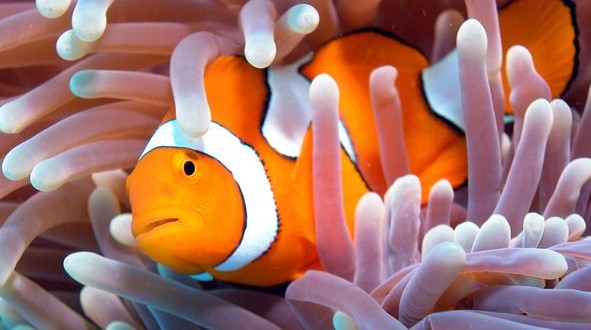Tiny clownfish larvae can swim up to 400 kilometres in search of a hospitable anemone – an epic ability that could help them adapt to environmental change, research has found.
The clownfish migrations were discovered by Steve Simpson of the University of Exeter who analysed the DNA of two separate populations.
The groups, from the Arabian Sea, off Oman, live 250 miles (400km) apart.
Mr Simpson and his colleagues captured 136 clownfish from a northern group and 260 from one which lived further south and compared their genetic make-up.
They found one of the clownfish had migrated north from the southern group and 14 had travelled south from the northern group.
A small number of the fish in each group were hybrids, suggesting that some of the incomers had bred with natives from the group.
Mr Simpson said the fish migrate huge distances in order to share their genes, which helps strengthen their populations.
He suggests the finding could be good news for fish as they face a number of threats from global warming, including the heating up of their habitats and the acidification of seawater.
Agencies/Canadajournal
 Canada Journal – News of the World Articles and videos to bring you the biggest Canadian news stories from across the country every day
Canada Journal – News of the World Articles and videos to bring you the biggest Canadian news stories from across the country every day



